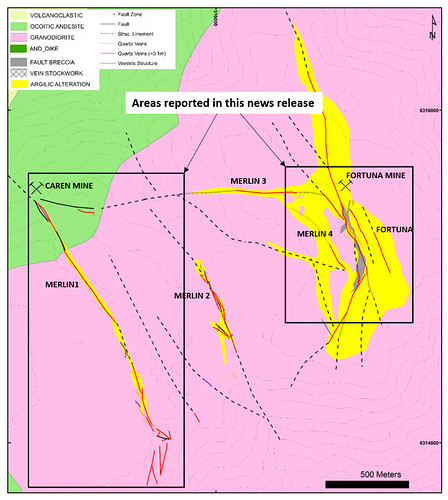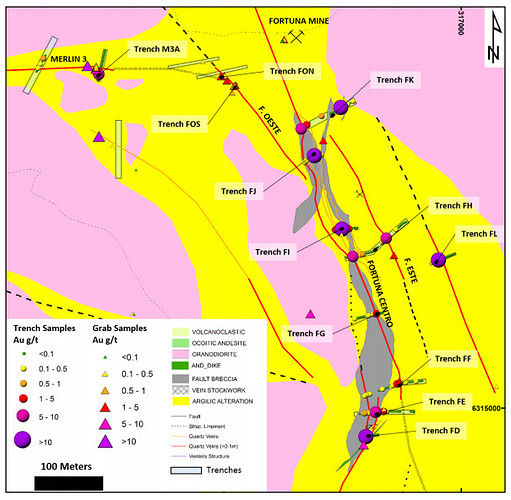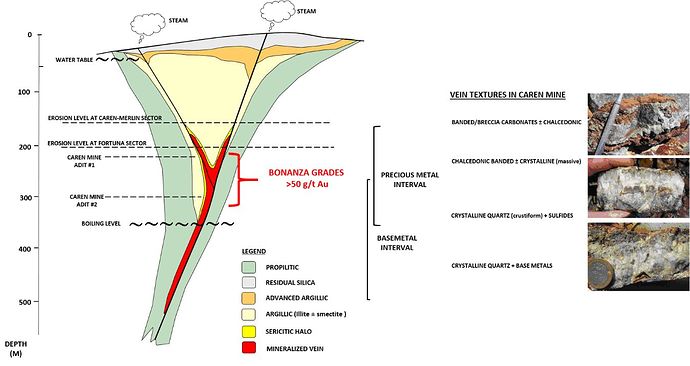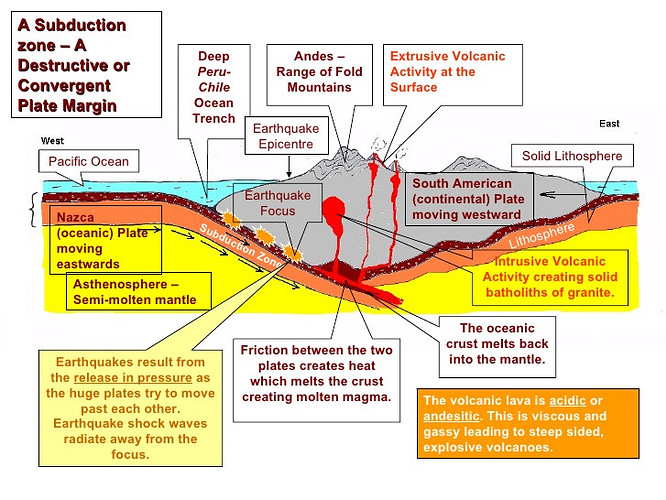Welcome back Debbie Downer.
I wonder if mechanical sorting could be of any use in our situation - just a thought. The end result could be the shipping of higher concentrate to Enami?
That was my best attempt at being optimistic. MGold could be right on the grade (over a certain period) as they will need to high-grade mine to make any money but the need for a financing round of some shape and size is just a fact. One doesn’t need to speak to the company to come to this conclusion but it certainly would help (read: BBoy).
Well unfortunately your attempt at optimism is misplaced as is your always throwing Bboy under the bus at his expense. Try to treat others the way you would like to be treated and give some grace. Not everyone knows it all like you.
Well, it is very interesting.
I’m surprised that they found a fair amount of ore just laying around inside the mine. (i.e. “Recovery of 54 tons gold ore from Fortuna de Lampa. Free ore, no blasting, with average grades over 2 oz/ton.”)
Miners typically would not leave the good stuff behind especially after going to all the trouble to blast it. Perhaps what we think of as the good stuff was really just waste rock surrounding the good stuff ?
From what I recall during the Gordon House days, they stopped mining the Lampa because they reached the end of the main vein.(There may also have been a big drop in the price of gold as well.) However, it was evident that they didn’t do a proper geologic mapping of the site as there was what appeared to be simple discontinuity in the vein (big slab of a different rock type) which then reformed a little further away based on surface mapping. Auryn’s surface mapping shows really a whole kaleidoscope of unmined veins(i.e. complete epithermal system) with the Lampa Fortuna mine at the center of it. This is exciting stuff. A grade of 85 grams/ton wouldn’t be unusual historically for Chile. However, almost all of that high grade ore was mined out long ago. Maybe they missed one?
Actually, I’m very much looking forward to hearing from brecciaboy - I know he will be full of perspective and insight which will be helpful to all shareholders.
Bald Eagle’s point that it will cost us one way or the other to ramp-up a mill is well-taken, yet obvious. But, I do trust our boys to do the BEST for us, as they are owners of MANY shares in MDMN, and they are therefore similarly situated (they own over half the shares outstanding? And they’re in maybe at about 8 cents per share?). Do you think they want to see THEIR OWN investment swirl down the crapper? Probably not. Then again, I tend to be a little more trusting and optimistic (and “hopeful”) for what it’s worth.
Self-employed. ![]()
Self-employed, THE ONLY way to be! Good luck with your next endeavor - hope it works out!
Recall these two images. The first one is of the whole epithermal system with the second one zoomed in. Note the small Fortuna mining symbol at the top of the second image. It doesn’t take much imagination to see the potential for a rather extensive area of high grade mineralization being present. High grade surface gold in excess of 10 g/t was found well down range from the entrance where the veins continue towards the South.(500 m to as much as a kilometer down vein.)
Hard to believe there are actually developments with Auryn/Medinah to discuss.
This diagram suggests that the bonanza grades will be found within 100 meters of the surface.
Few other fun facts to quickly get back up to speed on the Fortuna and its potential. (Note: The new photos on Auryn’s website are not the quartz veins present at Fortuna but the rather the quartz-sulfide type. Old miners prized the free milling quartz variety.)
“The Fortuna de Lampa mine was developed on a system of relatively narrow, high grade gold-bearing quartz veins hosted in granodiorite. The veins trend approximately north-south and dip moderately to the east. The system can be traced over a length of approximately 800 meters and there is evidence of an associated breccia to the south. There are about 1,100 meters of underground workings that have been developed on four levels concentrate on the main Fortuna vein and reaching a depth of 100 meters.”
“trenching program in the Merlin-Fortuna targets was finished, and over 1,600 channel and grab samples were collected. Over 5 km of lineal structures were recognized and the structural corridors are still open to be extended in all directions.”
“The mineralization in Merlin and Fortuna targets is characterized by several epithermal veins, mainly quartz veins accompanied with Fe-Mn-Cu oxides at surface. In some trenches and old adits quartzsulfides veins were mapped. Sulfides in veins are dominated by pyrite, chalcopyrite, arsenopyrite, galena, sphalerite and minor covellite.”
"FORTUNA
The mineralization at Fortuna target is represented by several parallel veins with NS to NNW trending. Mineralization is dominated by Au ± Cu ± Pb ± Zn bearing veins. (See figure 3 and Table 3, 4 and 5)
Veins are characterized by quartz textures, dominated by crustiform, banded quartz-chalcedoniasulfides and massive types. The widths varies from 0.1 meter to 2 meters, and quartz stockwork several meters halo is very common in the granodiorite host rock. Sericite selvages are very common in the veins-host rock contact.
The hydrothermal alteration is dominated by strong argillic corridor (kaolinite – smectite), and is possible to see extended up to 200 meters width in FH trench sector. This is supported by geophysical response in the CSAMT survey. (See Fortuna targets maps)
Similar to Merlin veins, several veins were discovered after trenching, and the most common evidence are quartz floats and strong argillic alteration corridors."
Hi Mike,
Thank you for the posts! I don’t think anybody would argue with the fact that the grades reported from production by SMFL from 1940 to 1970 at the Fortuna Mine as well as the grades found at the Caren Mine to its west (especially in “Adit 2A”) as well as these new 85 gpt gold occurrences at the Don Luis Vein tell us that we’re in the “boiling zone” within this vein system. This is where you find insane grades on a somewhat consistent manner. The ascending hydrothermal fluids carry the gold bonded to sulfur in “thiosulfate complexes” and the energy released during the boiling process is strong enough to break the bond between the gold atom and the sulfur atom thus releasing the gold. This natural “concentration” process results in super high-grade gold within these boiling zones which often stretch 300 to 500 meters vertically. We got a hint of this going on when one of Auryn’s geoscientists reported that the type of silicification found in the high-grade gold areas was chalcedony or “milk quartz” in which you can’t make out individual crystals because the fluids cooled to quickly to build nice crystals. What’s kind of interesting is that these super-heated hydrothermal fluids and gases need to cool in order to boil.
The jury is still out as to whether we should be referring to this complex of interrelated veins as “epithermal” veins or the much more desirable “mesothermal” veins. The “mesos” carry a lot more ore than the typical epithermal vein. They typically descend to 1 to 1.5 Km in depth and they even widen with depth. Your remembering that the P. Geos found high-grade vein outcroppings well down the southern downslope from the plateau approaching the valley floor is spot on. In Theresa Moreno’s “The Geology of Chile” textbook, her and her co-author Vic Maksaev cite how mesothermal veins in Chile tend to occur both near Colliguay (our next door neighbor to the north which Maurizio already owns a chunk of) and the Curacavi Mining District which is our next door neighbor to the west.
I see you just posted Greg Corbett’s image of boiling zones. You’d better give him attributions as although brilliant, he is one crusty old Australian buzzard. (just kidding-sort of!)
In case nobody else noticed, today was highest trading volume day in 5 years. (Okay about this time last year, one day of 32 million.)
Hi trading volume and same games being played with pps
You noticed that too. Jumped right over .0016 to fill @ .0014
so where the heck do you think this Don Luis activity is on your fancy schmancy maps. 
Starts at the Fortuna mine symbol entrance location marked on the map but not sure where it goes. There is a “Fortuna Centro” vein that runs South from the Fortuna mine symbol which might be related to or the same vein as the Don Luis?
Thanks mrbubba. It will. ![]()
Jesus anyone want to wake me up for all this? What’s going on 
Mike G.
Thanks for the great rock specimen pictures for every one to get accustomed to. A lot of people are not schooled in rock that precious metals are found in or around. The average Joe is used to pretty shiny grante countertops, or beautiful marble columns of their capital. But gold, silver, platinum and a host of other metals are found within some ugly rock, to average Joe.
These mountains were ocean seabeds once. Dozed up some 65 million years ago, by the continental tectonic plates.
Just old dead bleached out, ground up coral for the most part.
Ugly stuff. Some of it goes up into mountains, some of it goes down under towards the earths core.
That water logged sea bed with its bonanza of noble metals reconcentrated through millions of years by natures microorganisms biogeochemical cycle, gets pushed into the fire. It slowly cooks under those mountains. The lid is on the pressure cooker. As it dives downward, heat turns rock into liquid, metals (gold) into gas. For those that don’t know, gold can be melted with a propane torch.
So with these hot temps things are ready to blow.
This pressure might help a earthquake open a release for these gases. They are out of the gate way before liquid magma.
It has pressure, and is microscopic. It goes as far as it can till it cools down and condenses. It might plate itself on cold rock like Crome on your 1959 impala. Like found in hard rock mining zones.
Or it burns its way into organic rock (coral-limestone-old ocean bed) fractures it and cools. This is one way it gets up into our mountains. Some times this super heated gas hits ice on that mountain top, where all hell breaks loose. Like water poured into a red hot fry pan. Boom goes the top of the mountain, dumped down its sides, part of the top of the mountain is gone, Exposing larger concentrated areas under.
Thats what we have folks.
Google map Santiago Chile, switch to satellite image. Now up in upper left at 11:00 you’ll see two depressions in the mountain range, like a Double D bra. Where those two come together is our sweet spot. Look for the trenching on top of the flat spot . Thats us. A lot of action took place here long ago,
it shows. Time for a cold one. See ya. Cs.



